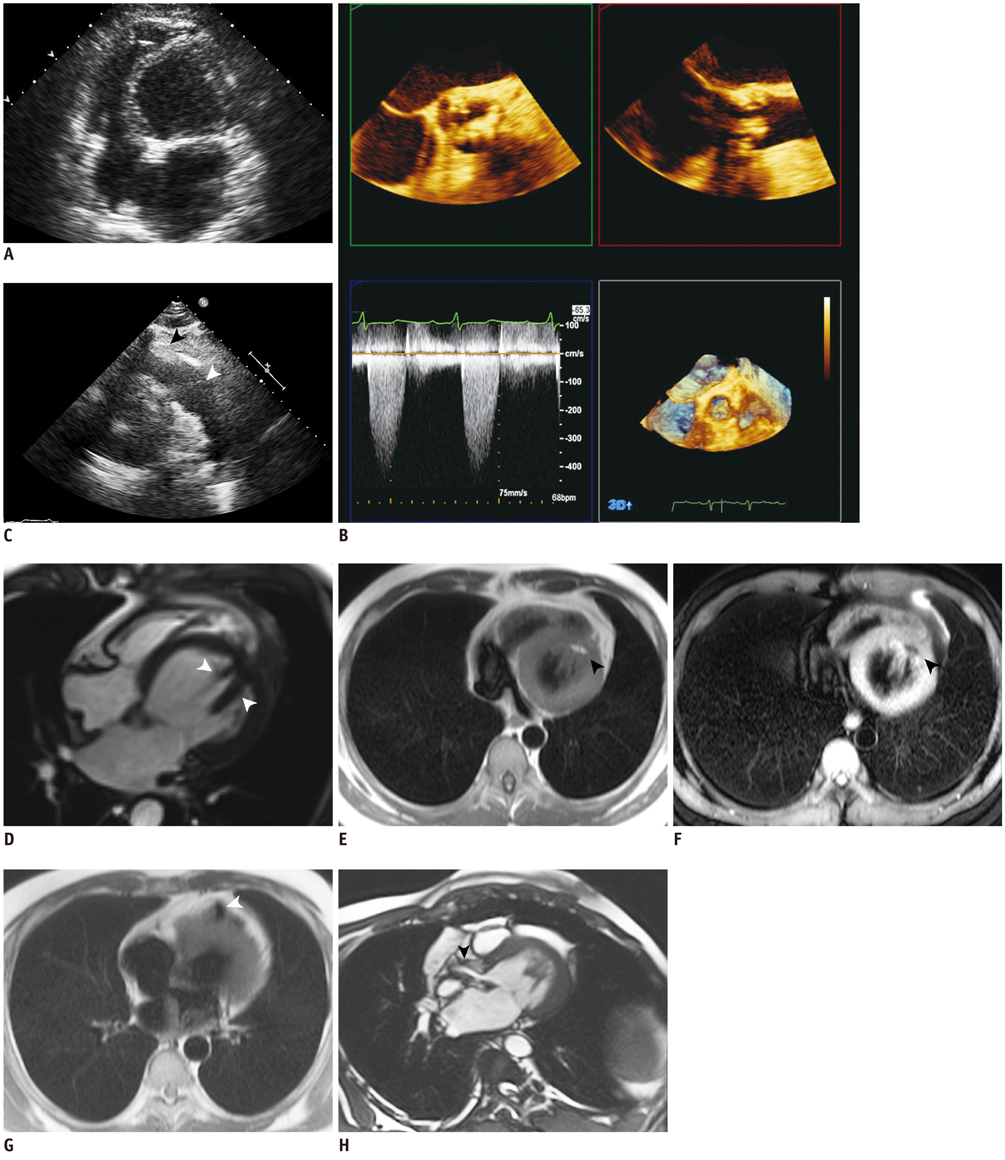Korean J Radiol.
2013 Dec;14(6):874-877. 10.3348/kjr.2013.14.6.874.
Isolated Left Ventricular Apical Hypoplasia with Infundibular Pulmonary and Aortic Stenosis: a Rare Combination
- Affiliations
-
- 1Department of Radiology, Medical Research Institute, Pusan National University Hospital, Busan 602-739, Korea. jw@pusan.ac.kr
- 2Department of Internal Medicine, Medical Research Institute, Pusan National University Hospital, Busan 602-739, Korea.
- KMID: 1711452
- DOI: http://doi.org/10.3348/kjr.2013.14.6.874
Abstract
- Isolated left ventricular (LV) apical hypoplasia is a rare congenital cardiac anomaly which is not accompanied by other cardiac abnormalities, with the exception of two cases. We report a case of a 33-year-old male patient with isolated LV apical hypoplasia combined with infundibular pulmonary stenosis and aortic stenosis. We review a literature focusing on the characteristic magnetic resonance features and combined cardiac abnormalities.
Keyword
MeSH Terms
Figure
Reference
-
1. Fernandez-Valls M, Srichai MB, Stillman AE, White RD. Isolated left ventricular apical hypoplasia: a new congenital anomaly described with cardiac tomography. Heart. 2004; 90:552–555.2. Haffajee JA, Finley JJ, Brooks EL, Kuvin JT, Patel AR. Echocardiographic characterization of left ventricular apical hypoplasia accompanied by a patent ductus arteriosus. Eur J Echocardiogr. 2011; 12:E17.3. Chaowu Y, Xin S, Shihua Z, Jianrong L, Hao W. Complete transposition of the atrioventricular valves associated with left ventricular apical hypoplasia. Circulation. 2011; 124:e538–e539.4. Meléndez G, Muñoz L, Meave A. Isolated left ventricular apical hypoplasia. Rev Esp Cardiol. 2010; 63:984.5. Freedom RM, Black MD, Benson LN. Hypoplastic left heart syndrome. In : Allen HD, Gutgesell HP, Clark EB, Driscoll DJ, editors. Moss and Adams' heart disease in infants, children, and adolescents, including the fetus and young adult. Philadelphia: Lippincott Williams & Wilkins;2001. p. 1011–1026.6. Irving CA, Chaudhari MP. Fatal presentation of congenital isolated left ventricular apical hypoplasia. Eur J Cardiothorac Surg. 2009; 35:368–369.7. Vanhecke TE, Decker J, Leonowicz N, Chinnaiyan KM. Isolated left ventricular apical hypoplasia. Congenit Heart Dis. 2011; 6:646–649.8. Starmer G, Younger JF, Stewart P. Multimodality imaging of isolated left ventricular apical hypoplasia. Eur Heart J. 2012; 33:675.9. Patrianakos AP, Protonotarios N, Zacharaki A, Tsatsopoulou A, Parthenakis FI, Vardas PE. Isolated left ventricular apical hypoplasia: a newly recognized unclassified cardiomyopathy. J Am Soc Echocardiogr. 2010; 23:1336.e1–1336.e4.10. Tumabiene KD, Magpali AE Jr, Chiong L, Jara RD, Abarquez RF Jr, Abelardo NS. A plump and fatty heart: isolated left ventricular apical hypoplasia. Echocardiography. 2012; 29:E193–E196.11. Ong CC, Hia CP, Lim TC, Teo LL. Isolated left-ventricular apical hypoplasia presenting as a left-ventricular mass on echocardiography. Pediatr Cardiol. 2012; 33:1456–1457.12. Motwani M, Witte KK, Plein S, Greenwood JP. Isolated left ventricular apical hypoplasia evaluated by cardiovascular magnetic resonance and gadolinium enhancement techniques. J Am Coll Cardiol. 2011; 58:2355.13. Marin C, Sanchez ML, Maroto E, Ossaba S, Ruiz Y, Zabala JI. MR imaging of isolated left ventricular apical hypoplasia. Pediatr Radiol. 2007; 37:703–705.14. Flett AS, Elliott PM, Moon JC. Images in cardiovascular medicine. Cardiovascular magnetic resonance of isolated left ventricular apical hypoplasia. Circulation. 2008; 117:e504–e505.
- Full Text Links
- Actions
-
Cited
- CITED
-
- Close
- Share
- Similar articles
-
- Interrupted Aortic Arch with Apical Muscular Ventricular Septal Defect Associating Esophageal Atresia with Tracheoesophageal Fistula
- A Case of Pulmonary Infundibular Stenosis Developed in Ventricular Septal Defect
- Three-Dimensional Endo-Cardiovascular Volume-Rendered Cine Computed Tomography of Isolated Left Ventricular Apical Hypoplasia: A Case Report and Literature Review
- Isolated Right Ventricular Apical Hypoplasia: A Case Report with 18 Years of Follow Up
- A Case of Right Ventricular Infundibular and Pulmonic Valve Infective Endocarditis


